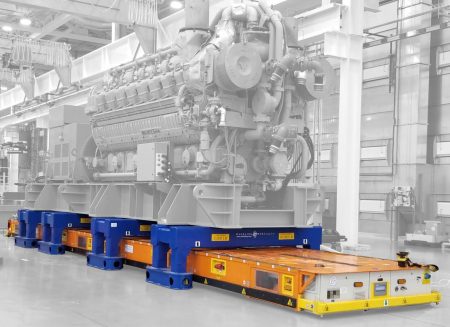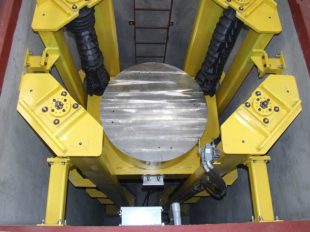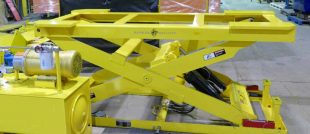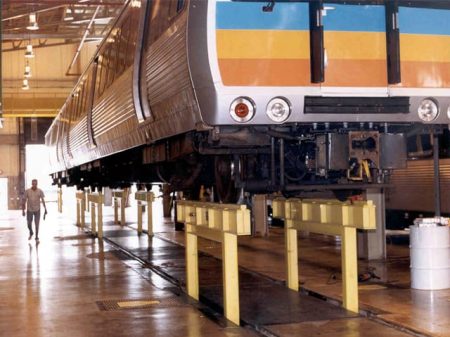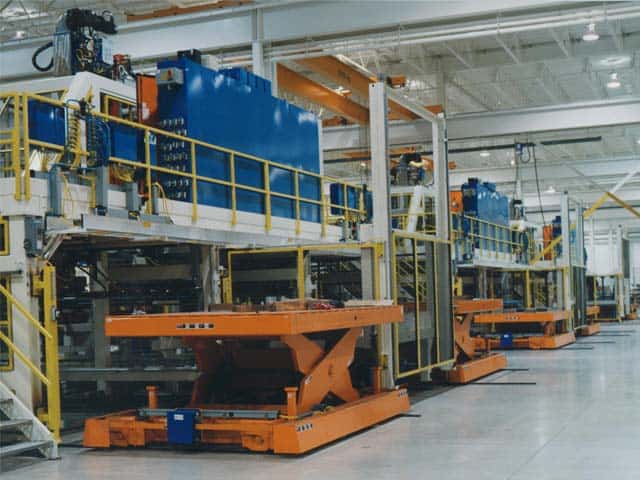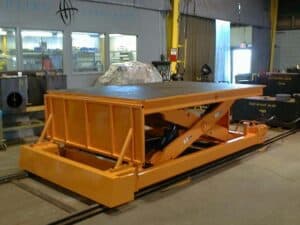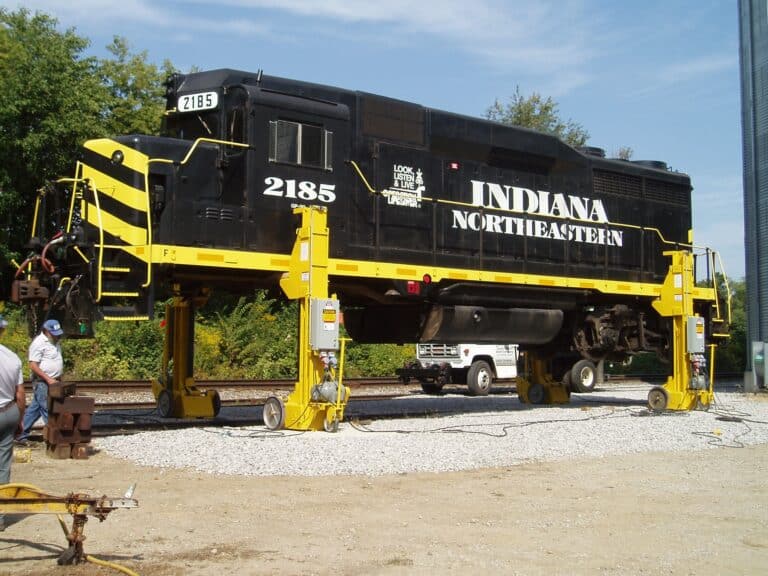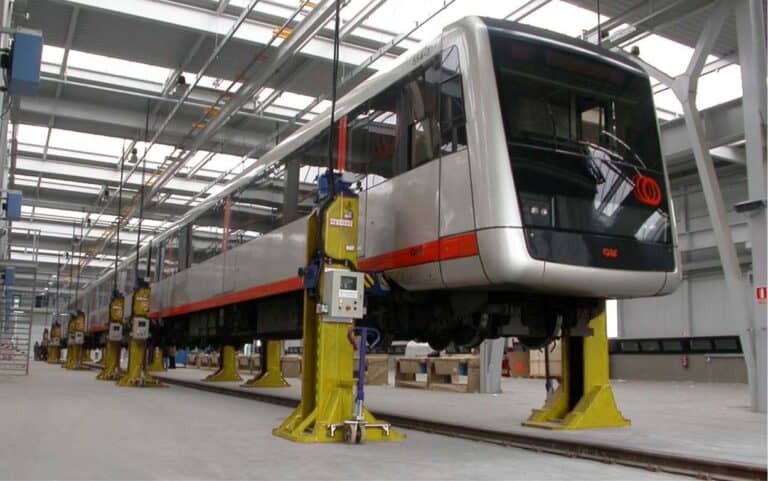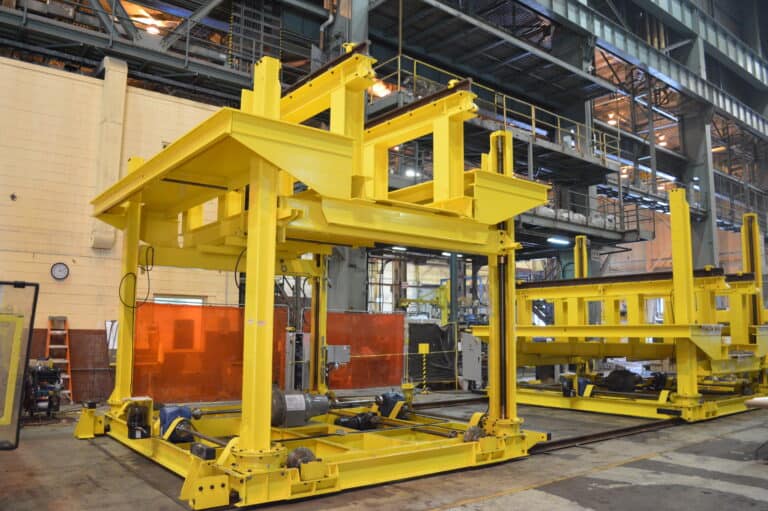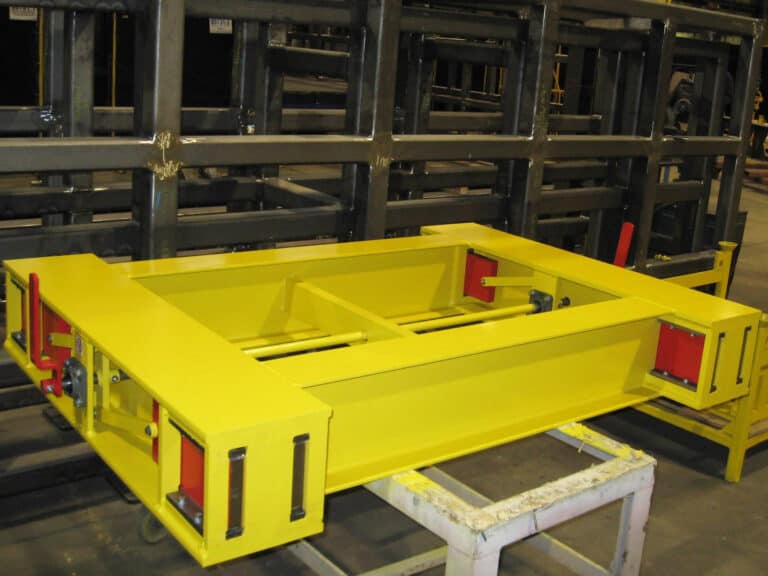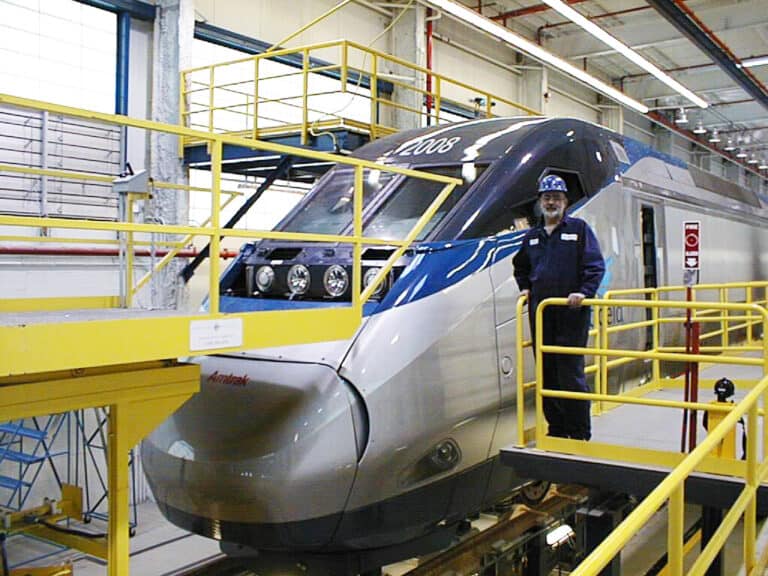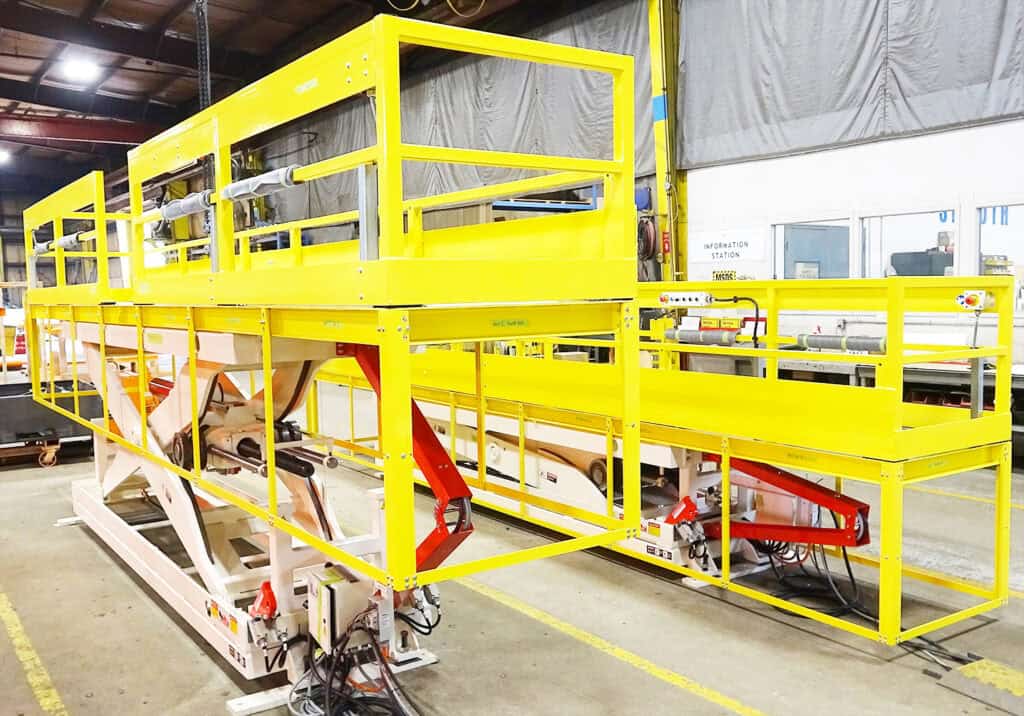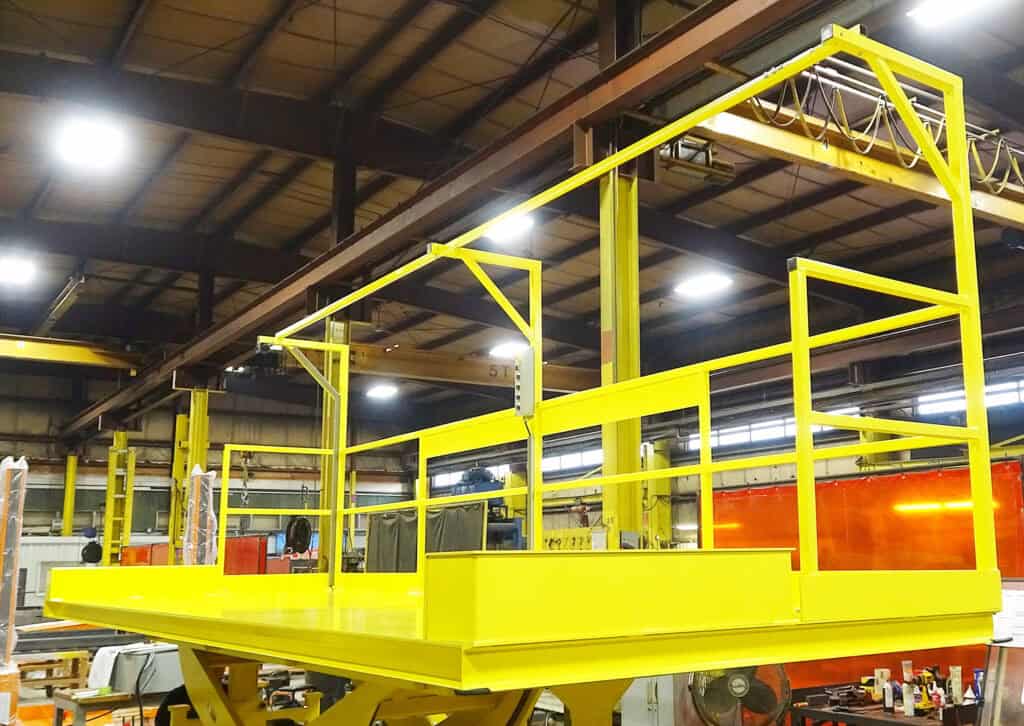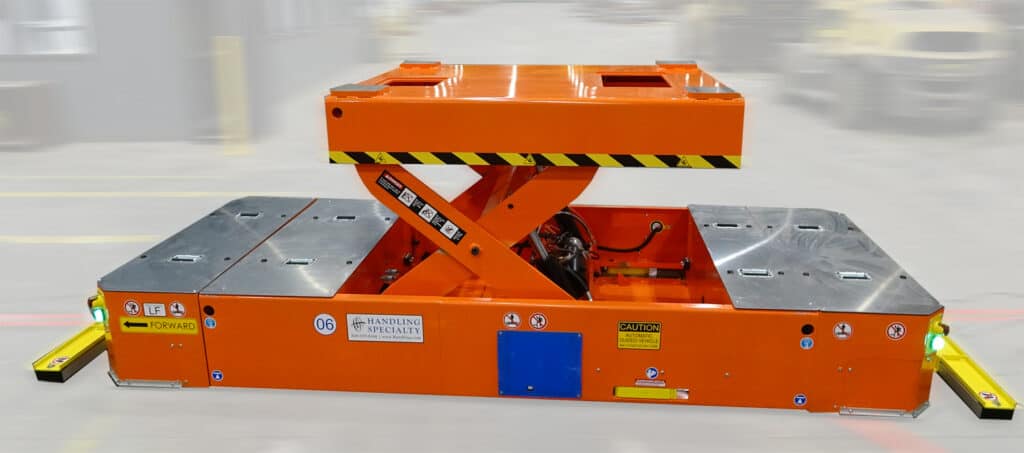Overview
Handling Specialty counts a turnkey skid stacker/destacker system for automotive plants among its repertoire of customized lift equipment. Installed as part of a production “buffer zone,” the system helps to compensate for fluctuations in vehicle production levels. Skids, typically used to convey untrimmed vehicle bodies, can be quickly added or removed from the assembly line as required.
To meet the demanding schedule of a multi-shift automotive manufacturing environment, this stacker/destacker system has been engineered and built to dependably cycle 75 times per hour.
The stacker/destacker is comprised of a power roller bed conveyor, a mechanically actuated lift, and skid retention arms. The sequence of operation begins with a skid being propelled onto the conveyor and stopped in position. The lift raises the skid to a height where the retention arms can close to support the skid. The lift then returns to the lowered position leaving the skid on the retention arms. When a second skid moves into position on the lift, it is raised to a level where it can interlock with the first skid. At this point, the retention arms open, and both skids, now securely stacked together, are lowered onto the conveyor and transferred off for storage. This sequence occurs in reverse to destack the skids for reintroduction onto the assembly line.
With Handling Specialty’s engineered-to-order expertise, this system can be customized to stack various sizes of vehicle body skids. Standard options include an anti-collapse system, an integral levelling device, a ball nut complete with internal load path inserts, and maintenance lock-up bars. For ease of service, the ball nut lubrication point has been made accessible from a central lube access point.
Features
- Mechanical actuation, high-cycle performance (75 cycles per hour).
- Zero creep, precise positioning.
- The system includes a power roller bed conveyor, mechanically actuated lift, and skid retention arms.
- Standard options include an anti-collapse system, integral levelling device, ball nut complete with internal load path inserts, and maintenance lock-up bars.

